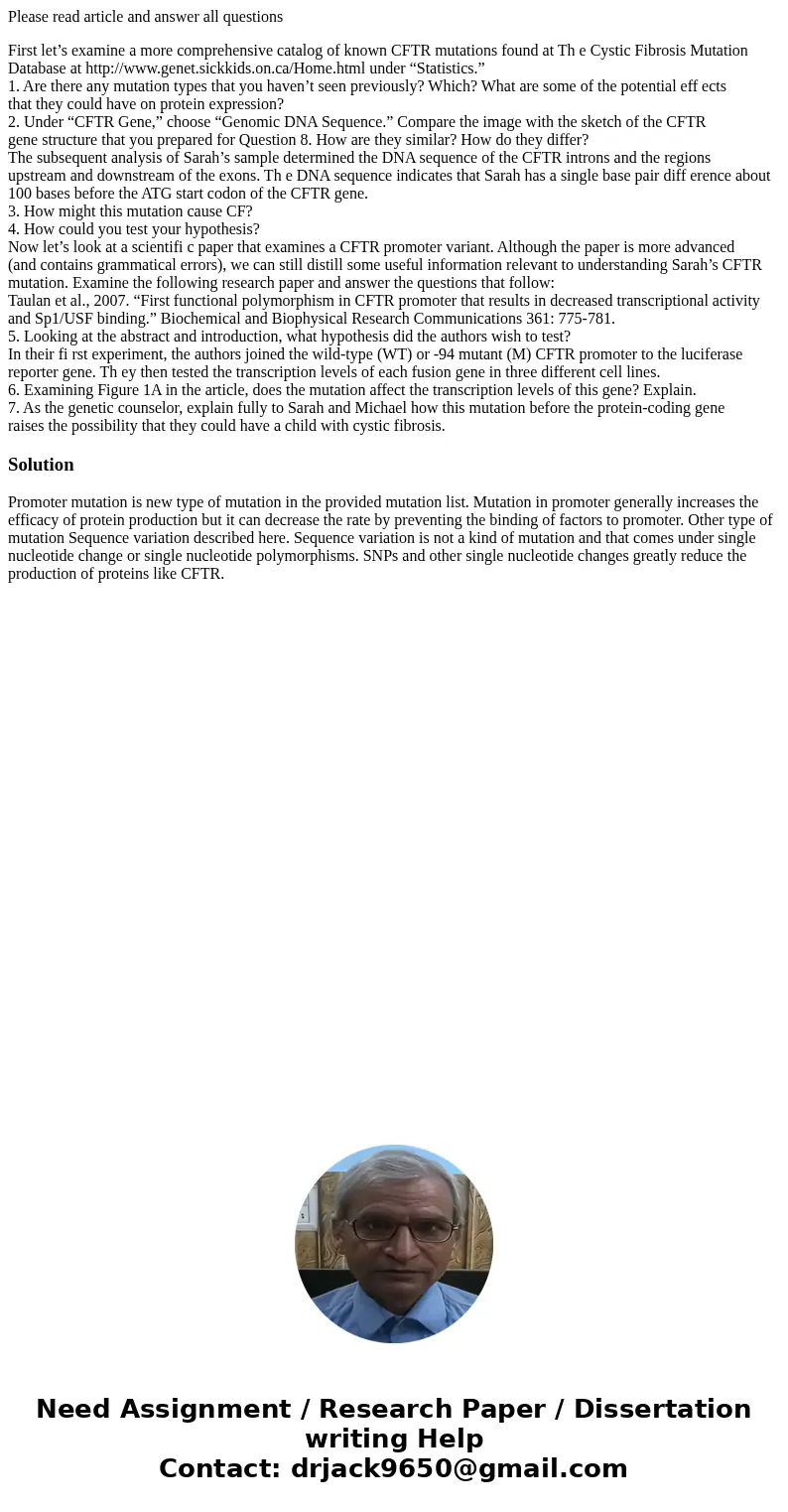Please read article and answer all questions First lets exam
Please read article and answer all questions
First let’s examine a more comprehensive catalog of known CFTR mutations found at Th e Cystic Fibrosis Mutation
Database at http://www.genet.sickkids.on.ca/Home.html under “Statistics.”
1. Are there any mutation types that you haven’t seen previously? Which? What are some of the potential eff ects
that they could have on protein expression?
2. Under “CFTR Gene,” choose “Genomic DNA Sequence.” Compare the image with the sketch of the CFTR
gene structure that you prepared for Question 8. How are they similar? How do they differ?
The subsequent analysis of Sarah’s sample determined the DNA sequence of the CFTR introns and the regions
upstream and downstream of the exons. Th e DNA sequence indicates that Sarah has a single base pair diff erence about
100 bases before the ATG start codon of the CFTR gene.
3. How might this mutation cause CF?
4. How could you test your hypothesis?
Now let’s look at a scientifi c paper that examines a CFTR promoter variant. Although the paper is more advanced
(and contains grammatical errors), we can still distill some useful information relevant to understanding Sarah’s CFTR
mutation. Examine the following research paper and answer the questions that follow:
Taulan et al., 2007. “First functional polymorphism in CFTR promoter that results in decreased transcriptional activity
and Sp1/USF binding.” Biochemical and Biophysical Research Communications 361: 775-781.
5. Looking at the abstract and introduction, what hypothesis did the authors wish to test?
In their fi rst experiment, the authors joined the wild-type (WT) or -94 mutant (M) CFTR promoter to the luciferase
reporter gene. Th ey then tested the transcription levels of each fusion gene in three different cell lines.
6. Examining Figure 1A in the article, does the mutation affect the transcription levels of this gene? Explain.
7. As the genetic counselor, explain fully to Sarah and Michael how this mutation before the protein-coding gene
raises the possibility that they could have a child with cystic fibrosis.
Solution
Promoter mutation is new type of mutation in the provided mutation list. Mutation in promoter generally increases the efficacy of protein production but it can decrease the rate by preventing the binding of factors to promoter. Other type of mutation Sequence variation described here. Sequence variation is not a kind of mutation and that comes under single nucleotide change or single nucleotide polymorphisms. SNPs and other single nucleotide changes greatly reduce the production of proteins like CFTR.

 Homework Sourse
Homework Sourse